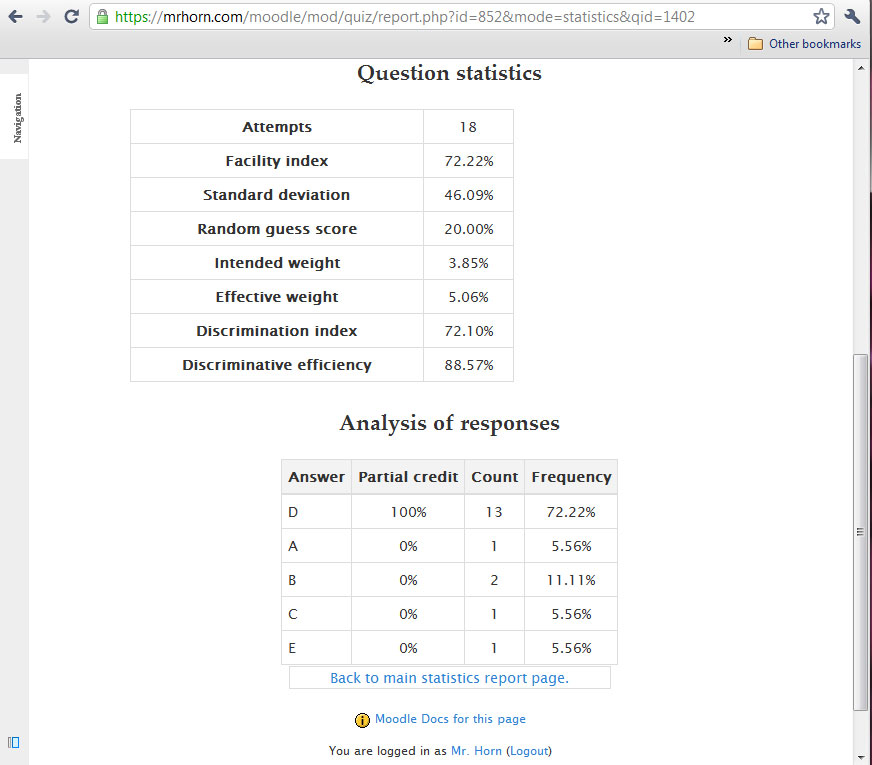This article was written before schools commonly used learning management systems. The material below is still relevant; however, I now use my school’s learning management system instead of Moodle.
On Monday, I assigned a review packet for the upcoming AP exam. It contained AP style multiple choice questions covering a wide variety of topics as well as short answer questions typical of those found on real exams. Throughout the next 3 evenings, students entered their answers on Moodle. The students who were absent Monday and Tuesday saw the assignment online and used the electronic copy. They knew better than to return to class with a feeble, “I didn’t get the packet.”
Most students finished the short answer questions by Tuesday and I scored them during my prep period Wednesday morning. The rest of the students finished the packet by the 6 pm Wednesday deadline. Immediately after the deadline, all students were able to review correct answers and explanations for both multiple choice and short answer questions. I scored the remaining short answer questions before class Thursday.
Right before class on Thursday, I asked Moodle to sort the problems by the percentage of students who answered each correctly on the first try. I wrote #13, #23, and #42 on the board. Students added a few more numbers as they entered the classroom. Perhaps the written explanations for those questions were weak or maybe the questions were oddly phrased. It took a little less than a class period to review the problems on the board, far less than the week it would have taken to review all of the problems from the packet.
Before the end of class, I asked Moodle to sort the students by overall score. The scores for Arvind and Samantha were far enough outside the acceptable range for concern. Arvind was already next to me asking for extra help. Samantha was quite shy and was trying to sneak out the door before I caught her. Both were able to meet with me during lunch the next day. Statistics from the scoring rubric for the 2nd short answer question suggested that many students missed an important subpoint of the question. A few other outstanding issues were also evident. Class on Friday was spent with problems that targeted identified weaknesses. Students were assigned homework for the weekend based on the specific problems they missed.
Benefits of using data from existing assignments
Data collected from existing assignments has significant benefits over data collected from standardized tests administered by third parties.
- The process of collecting the data can be beneficial to instruction.
- The data is available in a timely manner, often immediately.
- The data collected can be tweaked in response to district, school, or classroom needs.
- The data can be readily used to immediately improve instruction.
The narrative is an accurate representation of how I administer review packets and how I use the data to improve instruction. The student names are fictitious.
